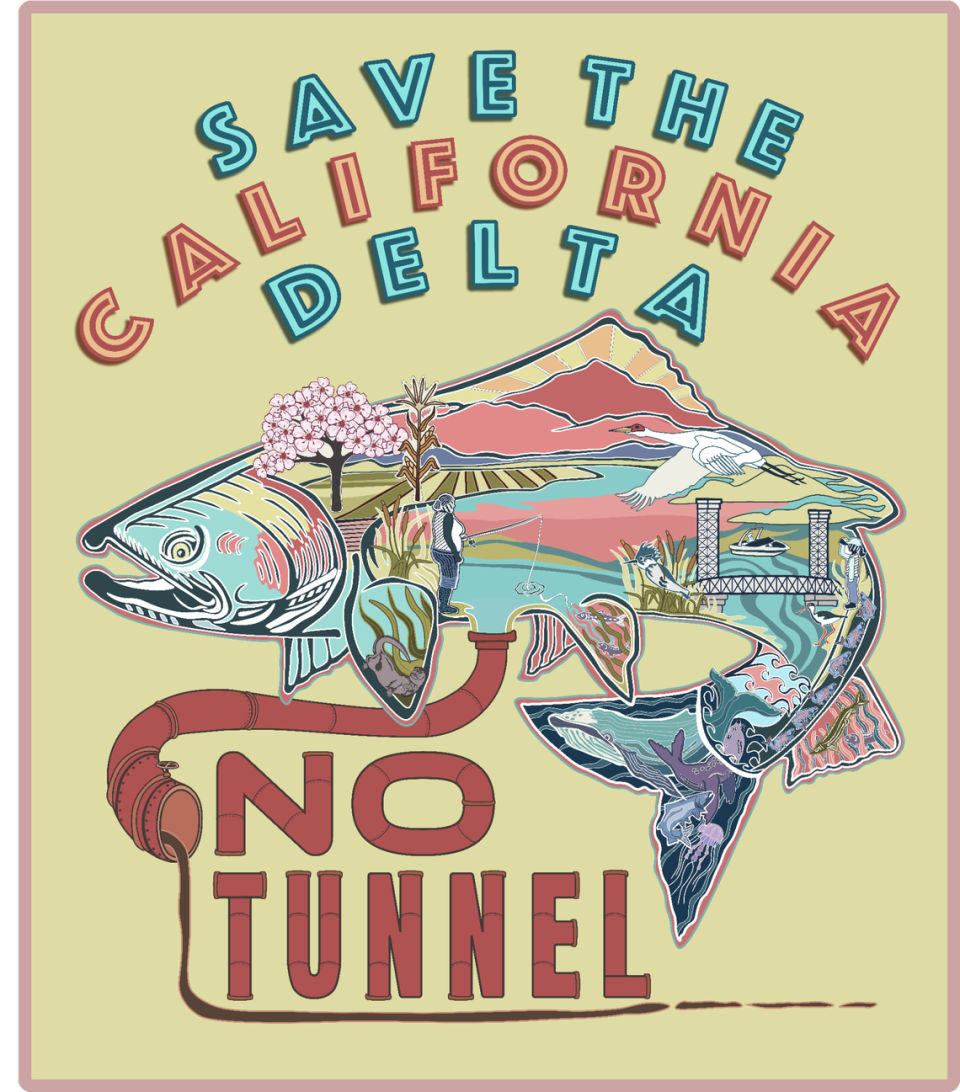Delta tunnel was a bad idea 60 years ago. It’s still a bad idea. Here’s why | Editorial
With the latest Delta tunnel proposal nearing the end of another review phase, it seems a good time to restate The Modesto Bee’s longstanding opposition to it.
The tunnel project was a very bad idea when earlier versions were floated over the past six decades. It remains a bad idea today, particularly here in the Northern San Joaquin Valley, for reasons of social justice and economic survival.
It’s not hard to see why most California governors since Pat Brown, who was elected in 1959, have schemed to send tons of Northern California river water to Silicon Valley and Southern California. Those areas need more water, and they possess financial and political power.
But should the wealthy and powerful get everything they want?
Not so far.
None of the earlier iterations of this proposal — the peripheral canal in the 1980s, the Bay Delta Conservation Plan through 2014, California WaterFix from 2015 to 2019 — succeeded. Under California Gov. Gavin Newsom, it’s now known as the Delta Conveyance project, and its prospects are hardly better.
The basic idea is to send a good portion of the Sacramento River through a 40-foot-tall, 45-mile-long tunnel under the eastern fringe of the Sacramento-San Joaquin Delta to a point near Mountain House, where the water would be picked up by the California Aqueduct. That huge canal would deliver it south — mainly to 25 million urban customers in Santa Clara County and Southern California, as well as farms around Kern County.

Newsom and his people say this version would be kinder and gentler to fish than earlier proposals, but environmentalists aren’t buying it, and people living and farming in the Delta see looming disaster in construction lasting 20 years or so.
Indirect threat to area rivers
Where do we come in?
About 85% of water feeding the Delta comes from the Sacramento River to the north, with the San Joaquin River from the south supplying the rest. Tributaries — our Stanislaus, Tuolumne and Merced rivers — provide the bulk of the San Joaquin’s flow.
Diverting significant amounts from the Delta, as the tunnel would do, could endanger the fragile estuary, which already struggles with harmful algal bloom and invasive water hyacinth, or choking weeds. Even more worrisome? The threat of saltwater creeping from the ocean further into the Delta, destroying farmland and freshwater habitat.
That might be prevented if enough water could be found to constantly flush the Delta. Where might that water come from? The obvious answer — regardless whether government admits it openly — is the San Joaquin, fed mostly by our three rivers.
A Delta tunnel would create winners and losers. Strip away all layers of complexity to find this conclusion: Those receiving flows in the Silicon Valley, the South San Joaquin Valley and Southern California would be enriched at the expense of Stanislaus and Merced counties and our entire region.
Taking from the poor and giving to the rich is unconscionable.
Taking water from an area with chronic high unemployment and low family income and giving it to the politically well-connected is morally reprehensible.
Forcing our farmers to pump more groundwater to make up for lost surface water could threaten the health of our aquifers, an unseen, incalculable reward for sound local water management over 135 years.

The Delta tunnel has created strange bedfellows. Rarely do the interests of environmentalists and farmers align as they do here.
Support slipping
The latest tunnel proposal seems to have even less support than earlier ones. Farms receiving water from the federal Central Valley Project — particularly around Fresno — were on board before California voters turned thumbs down on a peripheral canal in 1982, and later. But CVP customers have backed away from the current version, leaving only those in the State Water Project, mostly around Bakersfield, on board.
The megapowerful Metropolitan Water District of Southern California remains in the game as well. But even so, some experts say there isn’t enough support for a project expected to cost at least $16 billion.
In public, water agencies serving farmers in Stanislaus County have remained largely neutral toward Newsom’s tunnel. The Modesto and Turlock irrigation districts face great pressure to finalize what’s known as voluntary agreements, settling decades of legal strife directly threatening water rights on the Tuolumne. They don’t need another fight over an indirect threat posed by a humongous tunnel under the Delta.
Earlier drafts of the voluntary agreements had MID and TID spending millions of dollars on upgrades to wildlife habitat on the Tuolumne. Although environmentalists do not agree, those plans rely on solid science and would do wonders restoring the Tuolumne’s salmon fisheries.
In private, no one sees any good coming to this area from the tunnel project. Very few trust state water officials who have tried six ways from Sunday to get their hands on our precious resource, the lifeblood of our economy.
Over the years, every major newspaper north of Bakersfield has denounced almost every version of this bad idea.
The Bee remains resolutely opposed to the Delta tunnel under any name.

 Yahoo Movies
Yahoo Movies 